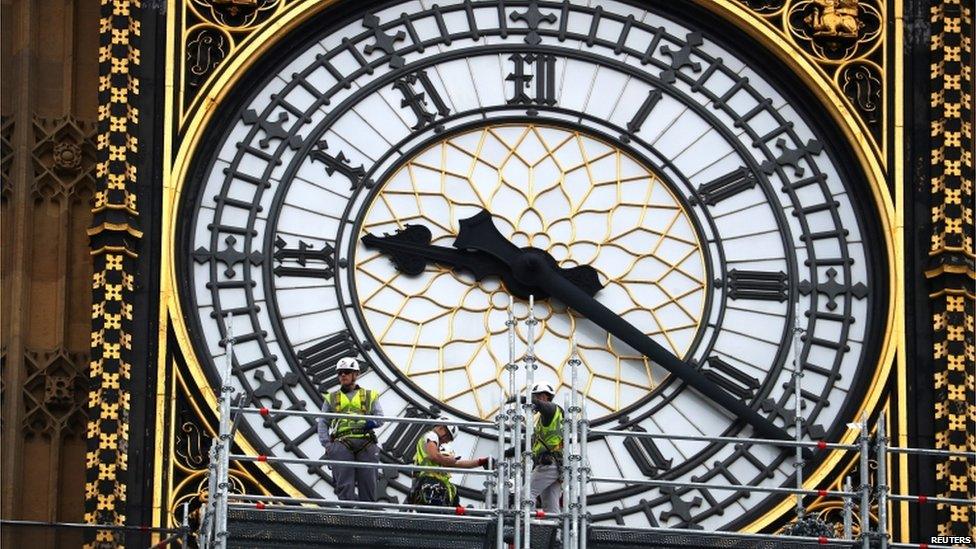Another delay to Parliament's restoration
- Published
- comments

One of the most familiar sounds in Westminster is the metallic clang of a can being kicked down the road.
And the latest such clang has resulted from a move to postpone for 18 months the decision on emptying Parliament's Victorian home to make way for a vital £4bn renovation programme, external.
The Palace of Westminster is part of a World Heritage site, and one of the four or five most recognisable buildings on the planet, but it is in a dreadful state, with water penetration, neolithic wiring, lurking asbestos, leaky drains and considerable risk of fire.
A £4bn renovation effort is proposed but there is no agreement on the key issue of whether MPs and peers should move out for a while, to allow the work to be done - although that would probably not now happen until the mid 2020s.
A joint letter to all MPs and peers from the Leaders of the Commons and the Lords has gone out.
'Range of views'
It proposes setting up a new body to, in effect, review the work of the last committee to study the problem - the Joint Committee under the then Leaders of the two Houses, Baroness Stowell and Chris Grayling, which reported in 2016.
Their successors note, laconically, that its strong steer towards emptying the iconic home of Parliament for a number of years had provoked "a range of views".
That is a delicate way of saying that a large number of MPs fear that if they move out of their historic home, they will never move back in, and will find themselves relocated to some bland industrial unit, while the current buildings are converted into a museum. So potent are these suspicions, and inhibitions about spending billions restoring Westminster, post Grenfell, on the basis of costings many MPs do not consider "robust", that there is no clear majority in the Commons for any way forward.
So in the year since the 2016 report, the issue has languished.
The two leaders, Andrea Leadsom in the Commons and Baroness Evans in the Lords, say they will put motions before their respective Houses "before the end of the year".
They will recommend the establishment of an Olympic-style Delivery Authority of experts, overseen by a Sponsor Body of MPs and peers. Its first task will be to examine the costings for the different Restoration and Renewal options and report, before a final decision is made in a free vote of both Houses, around mid-2019.

Three possible approaches are in play: total evacuation of the main building for several years, costed in the September 2016 report as the cheapest option; a partial decant - keeping one of the Lords or Commons chambers open and in operation throughout the work; or continuing running repairs working around the parliamentarians - the slowest and most expensive approach.
The aim of asking for new costings from a delivery authority is to cut through the doubts and deadlock with authoritative figures.
But it is worth pointing out that the longer the delay before a decision is made, the more costs will accumulate. The buildings of the Palace of Westminster are deteriorating faster than running repairs can be made, and speaking on BBC Radio 4's The World at One, Andrea Leadsom acknowledged that "successive governments have been patching and mending and the costs are escalating".
One Westminster source quotes a rough estimate of the extra cost at around £100m - although the Leader's Office "does not recognise" that figure.
The 2016 Report also noted the rising risk of a "catastrophic event," a fire, flood or electrical failure forcing the issue, not to mention an unplanned, embarrassing and very expensive evacuation of the main building.
Meanwhile, parliamentary staff patrol the corridors, on the lookout for fires.